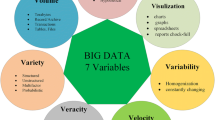Abstract
During 2016, breast cancer was the second cause of death among women within ages of 24–30. This makes mandatory to find reliable strategies that support physicians and medical services for early diagnosis of such disease. Currently, mammography is considered the gold instrument for assessing the risk of having breast cancer, but other methods are being analyzed, looking for systems that may be cheaper and easier to apply, including the use of thermographic images. In this paper, we present an analysis of the performance of a system based on a “Feed-Forward Neural Network” (FFNN), for the identification of two and three levels of risk cancer. Indeed, a system based on a “Regions-Convolutional Neural network” (R-CNN) for automatic segmentation of the breast is proposed. Both systems were tested in a private database developed by the “Center for Studies and Cancer Prevention, A.C.” located in Oaxaca, Mexico, which presents important challenges as class unbalances, a slack recording with respect to application of the protocol and noise. The systems were evaluated using three subsets of the database, built using images with different levels of challenges. Our results showed that a FNNN classifier performed well only with data strictly following the protocol, while the levels of performance with noisy data are not yet acceptable for real applications. In the other hand, the results obtained by the automatic segmentation based on R-CNN were competitive, encouraging for more research in this area.
Access this chapter
Tax calculation will be finalised at checkout
Purchases are for personal use only
Similar content being viewed by others
References
U. S. Food and Drug Administration. Mammography: What You Need to Know, 27 October 2017. [Online]. Available: https://www.fda.gov/ForConsumers/ConsumerUpdates/ucm420463.htm. Accessed 16 Febrero 2018
U.S. Food and Drug Administration.: Breast Cancer Screening: Thermogram No Substitute for Mammogram, 30 10 2017. [Online]. Available: https://www.fda.gov/ForConsumers/ConsumerUpdates/ucm257499.htm. Accessed 16 Febrero 2018
Centro de Estudios y Prevención del Cancer A.C.: Centro de Estudios y Prevención del Cancer, A.C. (2018) [Online]. Available: http://ceprec.org/index/index.html. Accessed 13 Febrero 2019
Girshick, R., Donahue, J., Darrell, T., Malik, J.: Rich feature hierarchies for accurate object detection and semantic segmentation. In Proceedings of the IEEE Conference on Computer Vision and Pattern Recognition, Columbus, OH (2014)
Gonzalez-Hernandez, J., Recinella, A., Kandlikar, S., Dabydeen, D., Medeiros, L., Phatak, P.: Technology, application and potential of dynamic breast thermography for the detection of breast cancer. Int. J. Heat Mass Trans. 131, 558–573 (2019)
Koay, J., Herry, C., Frize, M.: Analysis of breast thermography with an artificial neural network. In: 26th Annual International Conference of the IEEE Engineering in Medicine and Biology Society. IEMBS ‘04, Vol. 1, pp. 1159–1162 (2004)
Sossa Azuela, J.H., Rodríguez Morales, R.: Capítulo 2. Proceso de captación y formación de una imagen. In: Procesamiento y Análisis Digital de Imágenes, Madrid, Alfaomega pp. 45–59 (2011)
Zare, I., Ghafarpour, A., Zadeh, H., Haddadnia, J., Mohammad, S., Isfahani, M.: Evaluating the thermal imaging system in detecting certain types of breast tissue masses. Biomed. Res. 27(3), 670–675 (2016)
Hankare, P., Shah, K., Nair, D., Nair, D.: Breast cancer detection using thermography. Int. Res. J. Eng. Technol. 3(4), 2356–2395 (2016)
Reynoso Armenta, D.M.: Diagnosis of breast cancer through the processing of thermographic images and Neural Networks. Master thesis in Optics, Tonantzintla, Puebla (2017)
Luna, J.G.V., Gutierrez Delgado, F.: Feasibility of new-generation infrared screening for breast cancer in rural communities. US Obstetrics and Gynecology, Touch Briefings. 5, 52–56 (2010)
Hobbins, W.: In abnormal thermogram-significance in breast cancer. Interamer. J Rad. 12, 337 (1987)
Flir®.: Veterinary applications of thermography. Accessed 10 November 2017. [Online]. Available: http://www.flir.com/uploadedFiles/Thermography/MMC/Brochures/T820340/T820340_EN.pdf
MathWorks®.: Help « rgb2gray, » . Available: https://www.mathworks.com/help/matlab/ref/rgb2gray.html. Accessed 31 October 2017
MathWorks®.: Object Detection Using Deep Learning. Available: https://www.mathworks.com/help/vision/examples/object-detection-using-deep-learning.html?requestedDomain=www.mathworks.com. Accessed 16 Febrero 2018]
Acknowledgements
The authors would like to thank Dr. Francisco Gutierrez and the rest of the staff of CEPREC for their kindly support and advice during the development of this research. This work was supported by INAOE. D. Reynoso thanks the National Council of Science and Technology in Mexico (CONACYT) for the scholarship provided during the development of this work.
Author information
Authors and Affiliations
Corresponding author
Editor information
Editors and Affiliations
Rights and permissions
Copyright information
© 2020 Springer Nature Switzerland AG
About this chapter
Cite this chapter
Gomez-Gil, P., Reynoso-Armenta, D., Castro-Ramos, J., Ramirez-Cortes, J.M., Alarcon-Aquino, V. (2020). Segmentation and Classification of Noisy Thermographic Images as an Aid for Identifying Risk Levels of Breast Cancer. In: Castillo, O., Melin, P., Kacprzyk, J. (eds) Intuitionistic and Type-2 Fuzzy Logic Enhancements in Neural and Optimization Algorithms: Theory and Applications. Studies in Computational Intelligence, vol 862. Springer, Cham. https://doi.org/10.1007/978-3-030-35445-9_21
Download citation
DOI: https://doi.org/10.1007/978-3-030-35445-9_21
Published:
Publisher Name: Springer, Cham
Print ISBN: 978-3-030-35444-2
Online ISBN: 978-3-030-35445-9
eBook Packages: Intelligent Technologies and RoboticsIntelligent Technologies and Robotics (R0)




